Team and contact details
University of Groningen
Faculty of Arts
Groningen Institute of Archaeology
Poststraat 6
9712 ER Groningen, the Netherlands
Contact: Hans Peeters
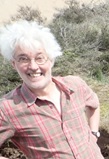
Hans Peeters (PI) is particularly interested in how hunter-gatherers perceive and use landscapes, and how this translates in material culture and patterning in the archaeological record. He also has a profound interest in technology, and is engaged in the field of heritage management with respect to the early prehistory of the Netherlands. Hans is involved in North Sea prehistory since 2003, and was member of the management team of the EU-Cost project Submerged Prehistoric Archaeology and Landscapes of the Continental Shelf (SPLASHCOS). He will lead the project.
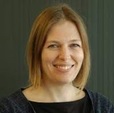
Eveline Altena is a specialist in DNA analysis, and manages the ancient DNA facility which is based in the Forensic Laboratory for DNA analysis in Leiden. She works in close cooperation with the Max Planck Institute in Jena, notably for the study of the prehistoric human remains from the North Sea. Eveline will focus on the genetics of Doggerland hunter-gatherers in close cooperation with biological anthropologist Paul Storm.

Luc Amkreutz is the curator of the Prehistoric Collections at the National Museum of Antiquities specializes in Mesolithic and Neolithic archaeology and the process of neolithization in Europe. He has been active in the field of prehistoric North Sea archaeology for many years, and stimulates the documentation and research of the many North Sea finds. Luc will contribute to the description and analysis of finds stored at the museum, and takes a leading role in various outreach activities, in particular in connection to the Doggerland exhibition.

Michael Dee is a specialist in radiocarbon dating and head of the Centre for Isotopic Research radiocarbon facility at the University of Groningen. Using rigorous sample treatment and a cutting-edge accelerator mass spectrometer, the project will obtain a vast set of radiocarbon dates, needed for the chronological anchoring of Doggerland finds. Being an expert in statistical modelling, Mike will also provide for a critical assessment of obtained dates.
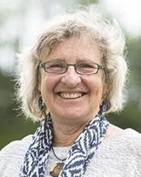
Annelou van Gijn is chair of Archaeological Material Culture Studies at Leiden University. Her work focusses on prehistoric technology, ancient crafts, and the reconstruction of the cultural biography of objects, employing experimental archaeology and microscopy. This work also includes the analysis of bone/antler tools. She is one of the leading microwear specialists, and as such participates in several projects in the Netherlands and abroad. Annelou has a keen interest in engaging ‘non-academics’ in experimental work. In the project, together with Hans, she is supervising the PhD research by Merel Spithoven.

Lisette Kootker focusses on isotopic signals in human remains, both in the context of archaeological and forensic research. She is VU coordinator for the interdisciplinary expertise centre for forensic scientific and medical research in Amsterdam. In the project, her work involves the reconstruction of palaeodiets of both humans and animals. Having developed a ‘strontium isoscape’ map for the Netherlands, and harnessed with data from other regions, Lisette will also explore possibilities to use strontium analysis as a proxy for palaeomobility of Doggerland humans and animals.
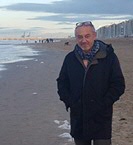
Dimitri de Loecker is specialised in Palaeolithic archaeology and lithic technology in particular. He has studied multiple collection from the Netherlands, Germany and England, and participated in the North Sea Area-240 (Great Yarmouth) project, and the Rotterdam Maasvlakte 2 and Yangtze harbour projects. Together with Marcel, he will continue to work on the material from Doggerland, particularly from a broader geographical, comparative perspective.
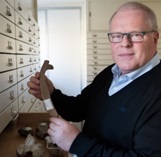
Dick Mol is an internationally renowned specialist in palaeontology and mammoths in particular. He is president of the Workgroup Pleistocene Mammals (Werkgroep Pleistocene Zoogdieren), and one of the driving forces behind the systematic collection of faunal remains from the North Sea. As a firm supporter of public outreach, he has featured in multiple documentaries broadcasted worldwide, and has an extensive network. Dick’s knowledge about Quaternary faunas and fossils is pivotal in the study of Doggerland environments.
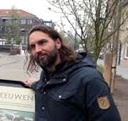
Axel Müller is specialised in the early prehistory of the Netherlands and ample experience in development-driven research on land. His interest in hunter-gatherer landscape use provides for a connection between offshore and on-land research. Building on his experience in development-driven work, Axel will contribute to the development of offshore ‘fieldwork’ strategies and practical approaches.
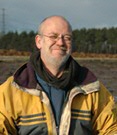
Marcel Niekus is specialised in Palaeolithic and Mesolithic archaeology. He currently works as a free-lance archaeologists, and has ample experience in the study of stone tools. He obtained a NWO Odyssey grant for the evaluation of the Mesolithic site Bergumermeer S-64B. Marcel is involved in Doggerland research for many years, and has described many finds from the Dutch beaches. In the project he will concentrate on lithic artefacts collected on the artificial beach of Maasvlakte 2, and Zandmotor.
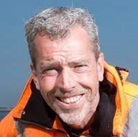
Dimitri Schiltmans is an archaeologist and is active in archaeological projects within the municipality of Rotterdam, where offshore developments are of direct concern. He had a pivotal role in the Maasvlakte 2 and Yangtze harbour projects, whilst keeping close contact with many of the private collectors. Dimitri maintains the ‘collections database’, and will contribute to the project in the establishment of protocols and guidelines for offshore developers.

Bjørn Smit is specialised in the early prehistory of the Netherlands and active in archaeological heritage management at the Cultural Heritage Agency. He is directly involved in offshore and coastal projects, and has played an important role in the Maasvlakte 2 and Yangtze harbour research programme, as well as the initiation of several projects focussed at inventory making and offshore geoarchaeological mapping. Within the project, Bjørn will be concerned with the development of heritage management tools.
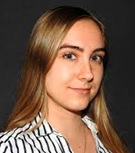
Merel Spithoven is a PhD candidate at the University of Groningen. Her research in the project focusses on human-animal relationships (deer in particular) through the reconstruction of bone and antler artefact biographies. As bone and antler projectile points represent a major part of the Doggerland finds, and Merel being an avid archer, she will conduct shooting experiments as a basis for the interpretation of archaeological materials. Merel also has a keen interest in public outreach, and has many contacts within the community of private collectors.
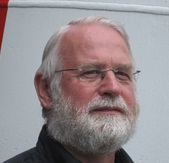
Ad Stolk is involved in the management of offshore and coastal developments at Rijkswaterstaat (Ministry of Transport and Water Management). He engages with the integration of archaeological interests in protocols and management processes at a national level, and has been responsible for several initiatives concerning the geoarchaeological assessment of the Dutch part of the continental shelf. Ad will contribute to the project in the establishment of protocols and guidelines for offshore developers.
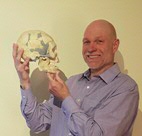
Paul Storm is a postdoctoral researcher in biological anthropology at the University of Groningen, next to his work as a teacher in biology at the University of Applied Sciences Rotterdam. For his PhD research, he studied the famous skulls from Wadjak (Indonesia). Paul conducted a pilot study of human jawbones from Doggerland, and which he will expand further within the project and in close cooperation with Eveline, notably to investigate particular biological aspects of Doggerland populations.
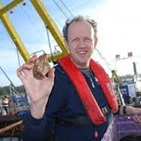
Wouter Waldus is a marine archaeologist involved in offshore research in the context of development-driven projects. He focusses on the development of innovative practical approaches to issues in offshore surveying and assessment. Experiments with the ‘Marine Prehistory Sampler’ have proven effective for the investigation of shallow water situations. Wouter will contribute to the project by using his expertise in the development of new sampling techniques and strategies.
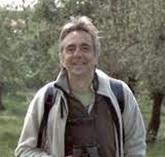
Jørn Zeiler is an archaeozoologist with a broad interest in human-animal relationships. As a free-lance archaeozoologist, he has studied countless assemblages from many different archaeological sites and periods. He took part in large research projects, such as the Odyssey programme for the investigation of legacy data concerning Late Neolithic sites in Noord-Holland, and the Mesolithic site of Rotterdam Yangtze harbour. In the project, Jørn will work on bone and antler artefacts, in close cooperation with Merel.
| Last modified: | 27 May 2021 1.00 p.m. |
